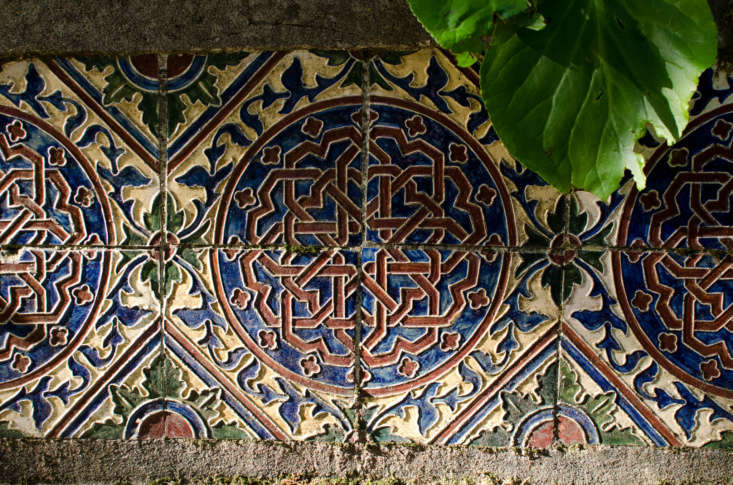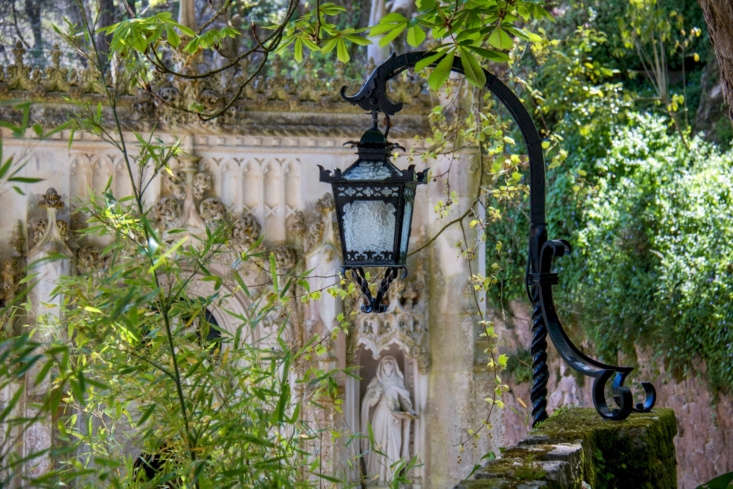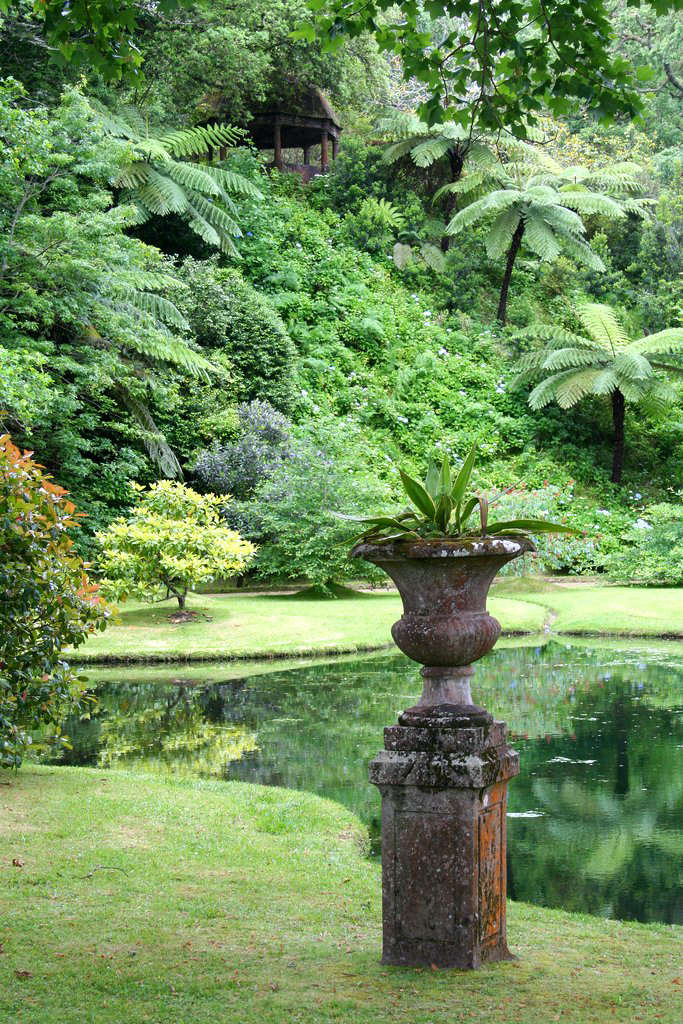Portugal’s gardens are a lesson in Europe’s long history of conquest. The Roman and Moorish invaders who descended centuries ago on the sunny Iberian peninsula brought a predilection for colorful tile courtyards, elaborate ironwork, and formal designs. And yet Portuguese gardens look like no other landscapes in the world.
The country’s climate is special. With a long coastline along the Atlantic Ocean and inland expanses of dry, mountainous terrain, Portugal’s hot summers and mild winters create a long growing season. Wild violets bloom on the outskirts of Lisbon in winter and orange trees drop fruit on city streets. Bright flowers spill from window boxes and terraced terrain on steep hillsides.
A Mediterranean climate, with pitiless sun, ocean winds, and a mishmash of architectural influences collected over the past centuries can offer inspiration for any landscape. See 10 garden ideas to steal from Portugal.
Azulejos

Since the 14th century, decorated tiles called azulejos have adorned facades, floors, benches, columns, and ceilings. In the garden, consider using patterned ceramic floor tiles on a patio to create the same anchoring effect as a rug. For more inspiration, see The New Outdoor Rug: Perfect Patterns for Tile Patios.
Loggias

The ancient Romans brought their architectural elements to Portugal, including covered corridors at ground level. Loggias can serve as shaded scenic overlooks in a hot climate.
Peristyle Gardens

Roman ruins at Conímbriga in central Portugal tell a story of garden design trends from nearly 2,000 years ago. Walls of precisely spaced columns edged the perimeters of courtyards, creating sheltered courtyards. Peristyle gardens, an idea borrowed from the colonnades built by the ancient Greeks, are calm oases even in the middle of a busy city. For more ways to create privacy, see The Cult of the Courtyard: 10 Backyard Ideas for Small Spaces.
Orange Trees

Along with Spain, Portugal has an ideal climate for growing oranges; Citrus sinensis thrives in regions with hot summers and mild winters.
In USDA growing zones 9 to 11, you too can grow orange trees in your garden. In other climates, you can grow potted citrus trees on a patio (bring them indoors to weather the winter). For more growing tips, see How to Keep an Indoor Citrus Tree Happy.
No-Water Landscapes

It may sound counterintuitive, but one of the worst things you can do to a garden in a dry climate is to water it. By watering, “you may think you are making life easier while, in fact, all you’re doing is limiting the range of plants that can survive in your garden,” writes Olivier Filippi in Portugal Resident. “Automatic watering systems are one of the worst inventions of the modern Mediterranean gardener” because many plants “simply cannot tolerate the combination of heat and moisture. Irrigation during our blazing summers generally proves fatal to them.”
Ferro Forjado

From wrought iron balcony railings to forged iron fences, ornate and lacy metalwork is a common architectural feature in Portugal’s gardens. (In Portugal’s historically agricultural economy, ironworking, glassblowing, and textile production were 19th-century innovations.)
Introduce ironwork into a garden with a metal trellis, arbor, or pergola, and train a vine to grow up it to soften the shape. See more in Everything You Need to Know About Arbors and 10 Easy Pieces: Arched Arbors.
Thermal Pools

Moorish “water tanks, which tend to be much larger in Portugal than the average garden pool, are another legacy left by the peninsula’s Arabic settlers. They are often built directly over a spring,” writes Helena Attlee in the Telegraph. “These tanks created a focal point in the garden, a place for relaxation and contemplation or livelier activities involving boats or fishing nets. Stone benches are sometimes set into the base of the wall and a shady pavilion often stands beside the water, or on an island at the centre of the pool.”
You can mimic the effect with a small pond or large fountain, and a stone bench.
Camellias

A 16th-century import from Japan, camellias arrived in Portugal to find growing conditions they liked. If you live in a similar warm climate, you can plant camellia bushes that will grow into small trees and create privacy hedge or visual punctuation in your garden. See more ideas in Camellias: A Field Guide to Planting, Care & Design.
Whimsical Topiary

Inject a note of whimsy with a fancifully shaped shrub. See more ideas in Boxwood Topiaries: 6 Tips for Trimming Shrubs from Niwaki’s Jake Hobson.
Window Boxes

Even if you don’t have a front garden, you still have a facade, don’t you? Window boxes filled with colorful, hardy plants such as red pelargoniums or planters with bougainvillea vines will greet passersby with a cheerful welcome. See more in Pelargoniums: A Field Guide to Planting, Care & Design.
If you’re designing a garden from scratch (or rehabbing an existing landscape), start with our curated guide to Garden Design 101. For more garden inspiration for Mediterranean climates, see:
- Lavenders: A Field Guide to Planting, Care & Design
- Pool of the Week: A Manmade Beach in the Portuguese Countryside
- Salvia: A Field Guide to Planting, Care & Design
- Outbuilding of the Week: Portugal’s Casas Na Areia












Have a Question or Comment About This Post?
Join the conversation (0)